-
Posts
339 -
Joined
-
Last visited
Content Type
Forums
Detector Prospector Home
Detector Database
Downloads
Posts posted by Geologyhound
-
-
Almost looks like the figure on the left may be holding a threshing flail. With the light from the right, you can see the left figure’s hand with what appears to be a rod and something dangling from the end of the rod in the middle. With the light from the left the figure on the right appears to be holding a hammer. You can see four fingers of the hand holding the hammer (?) shaft.
-
12 hours ago, Chase Goldman said:
I tend to agree, regarding the other tracking apps. But one thing this one does that the others don't is that it automatically records target IDs even for the targets you don't recover, so it makes a good tool for quickly surveying a site and automatically recording target hot spot areas. Unfortunately, GPS accuracy limitations may not be up to the task.
If your Apple iPhone is older than iPhone 14, then the GPS accuracy will likely be limited to plus or minus several meters (on data collection and again when attempting to find the previously located spot). Theoretically, starting with the iPhone 14, the accuracy should be better. Apple claims the new accuracy is centimeter-level, which would be survey level accuracy. I don’t know if that requires a special subscription, and I don’t have that new an iPhone. So, I have not been able to confirm.
-
One of the “figures” appears to have a headdress or Roman-like helmet (see attached close-up).
Building off of Ghostlight’s theory, I am wondering about an Indian Peace Medal. I have looked through a lot of the American series, and those do not appear to be a good match. But there are also British and Canadian peace/treaty medals. The configuration of the few of those I have found on the internet is closer to your two “figures“ but still does not appear to be a good match.
Some of the ones I have seen had writing on the back, which could equate to your “flat“ back. There appears to be lineations on the back of your find which may correspond to lines of text. There may also be some sort of small curving pattern in the middle on the back.
There appears to be a larger portion of one side of your medal which is broken off. Anything made to be worn would have had a hole punched in it. Aging could have contributed to loss of the whole area with the hole. The odd thing is, the broken out portion is on the “side“ relating to the “figures“ and “text“. If that is where a hole was located, then the medal would’ve been sideways when worn.
Hope you can find a positive ID, it has me curious!
-
Looks like time well invested. Congratulations!
-
If you scrape at the silvery looking stuff with the point of a knife, do little flat sheets flake off? If so then I would say you probably have a gneiss with muscovite layers.
If the silvery looking stuff is not muscovite, then I have seen some petrified wood with that general appearance. But I’m definitely leaning towards my first opinion. -
Looks like a lot of bullets and shotgun shells. Still, if I could turn up a two cent piece at a hunted out site, I would be happy!
-
Well, I went back to this site, lined up on where I found the Mercury at the end of the last day, and within about 5 feet hit a sporadic high tone amongst the nails with my modified fast program. Dug down and hit about a 3 inch root from a long vanished tree. I managed to yank it out of the way and the next cup I pulled underneath it had a clean high tone. It was another 1944 Philadelphia Mercury!
I proceeded to grid the immediate vicinity from one direction and found two mid 50s wheats.
I also found a 2.75 pound, 6-inch brass ring with two small label plates. One says HEEK IN. The other says N – 1654-52. There is also a 36 stamped in the ring next to one of the labels. I am guessing this may be some motor part? Sad thing is, with the price of scrap brass, this might be worth more than the Mercury dimes…
In addition, I found something with a strong quarter signal (93) which I first thought was part of a hubcap. But then I found another one about 30 feet away with the same exterior pattern. The second one was mashed flat and had a little handle. So they are actually little tea cups. I showed them to my mom. She recognized the pattern and is certain she had cups just like it when she was a little girl back in the 40s.
So once again, it seems like all the artifacts are from the 1940s and 1950s. I know this site was used in the 1850s. Hopefully I will find some thing that old! Still, I can’t argue with two Mercury dimes in close proximity.
-
Looks like a typical mineral assemblage for a potassium feldspar granite with some larger grain sizes indicative of slower cooling. I don’t see any radial fracturing, tektite glass, or melted areas with a glassy appearance. The individual clear grains mixed in with the other minerals would be quartz, not glass.
-
Thanks! I am not finding Maprika or Tect O Track in the Apple App Store, but I did find the onX and Cal Topo apps.
-
Beautiful! I would have a big grin plastered on my face for weeks!
-
Did you find this in a fairly dry environment? The exterior of the “rock” appears to have sand sized particles cemented around it. If you brush it or rub it with your fingers, do any grains fall off? Such a “shell“ around a rock could be a weathering rind, or it could be a cemented crust. In this case, the appearance makes me think you may have a calcite cemented (caliche) crust. Caliche crusts are common in arid environments. If you drop a little dilute hydrochloric acid on the surface and it fizzes, that would confirm it. In this case I would further guess the rest of the “rock“ is actually a calcite cemented sandstone, and that calcite helped cement the crust.
-
2 hours ago, Chase Goldman said:
Such as…
One of the members in my metal detecting club showed me a commercially available app he uses for locating himself and historical features while metal detecting. That was a few months ago and I don’t remember the name of it. But while I was jumping back-and-forth between webpages on my phone to see historical topo’s, current street maps, etc. and cross-referencing between them to figure out where I was in relation to hundred year old features, he opened up his app and popped up a topo map layer on it with his position indicated.
I don’t know the full capabilities of that app because I don’t have it. Instead, I have been “old schooling” it with the current iOS map app and a website with a series of historical topos (and index) for my state.So, there is at least one other app out there with georeferenced maps and the capability to show your position relative to that map. I cannot testify to the accuracy of that app. But this is why I said if Go Terrain doesn’t have a map overlay capability (at least for the US where I would use it) then it lacks capability compared to competing apps.
Now, I am guessing any app with maps will be limited to the maps in the database which may be further limited by cell connection or freely available maps you can download for off-line use. I would think it would be a fantastic feature if you could have a GPS app reference user-supplied pictures/drawings/maps. If you could two-finger rotate and scale, or tap two points of current reference and two points on the figure to automatically overlay, I could see that being immensely helpful - especially in areas where cell reception is not available to maintain a link to a map server.
-
1 hour ago, F350Platinum said:
I trust you are finding V2 to be a benefit?
Thanks!
Other than a few minutes in my backyard, this was my first real opportunity to use V2. I may need to double check to make sure I entered my programs correctly. It seems like a lot of the targets are sounding off louder. However, the coin had a nice soft pinpoint sound which told me it was smaller or deeper (about 5 inches). I may need to adjust some of the volume levels.
-
Had about 40 minutes to hunt this afternoon and stopped at this site. I am glad I did, as I finally broke my silver drought. This is the first silver dime I have found with my Deus 2. I just updated to version 2. Timewise, this jives with the rest of the stuff I’m finding at this site. But it’s silver, in decent condition, and not a relatively recent Rosie. Overall, I would say that was a great last find of the day on my way back to the car!
-
Yes, make sure you have permission to hunt. Like a lot of hobbies, a few bad actors can give a lot of people a bad name. Practice your recovery techniques and strive to leave the grounds looking better when you leave (I always pick up surface trash as well as the trash I dig).
If you don’t have one, get a pinpointer. They are worth their weight in coins and then some. They will also greatly speed your recovery process and allow you to dig more targets.
-
-
4 hours ago, F350Platinum said:
The round foil bits look like "Merry Widow" tin halves, a common and amusing find. 😀
Still cool stuff. 👍
Ah. I thought one of them said fresh something or other, but then there was a space followed by what I think is CA. So I wasn’t sure if it was a description or a city and state.
-
5 hours ago, Gold Seeker said:
The Miller item appears to be one half of an old padlock case.
Well that’s cool! I hadn’t thought of that option but it would explain the two openings on the top and the one opening in the bottom.
-
Got permission to hunt a site which was in use in the 1850s. But, I think most of the stuff I found is from the mid-1900s. The Ranger cap pistol is from the 1950s. The “Miller“ item I believe is some sort of electrical junction? The “badge” has some sort of design on the front but I can’t make out any writing. There is some sort of hanger on the back. The foil items may be yogurt lids? There is embossed writing on one but I can’t make out what it says. It is definitely heavier grade foil than modern yogurt. I think the bullet is a .45, but I don’t know from what or how old.
Soil is very soft - I can sink my trowel to the shank without much effort. The only coin I found here was a 1940s wheat. It was down around 6-7 inches and was an iffy signal with nails. I suspect I may need something larger than my deus 2 9-inch coil to find many coins here.
Thanks for looking!
-
It might be a piece of cinder or foamed slag from an industrial furnace. Factory furnaces generated a lot of waste which was dumped or used as fill material all over the place.
-
Sounds like a great spot to keep hitting!
-
On 10/3/2023 at 5:41 AM, brys said:
This rock is heavy and dense ,it’s from the beginning of time ,tungsten burrs won’t touch it it’s so hard ,indentation from when it was in a liquid state
Keep in mind that if something is molten, it would adhere to anything it touches unless it is dropped in water or solidifies before it touches something (e.g. a lava bomb). Lava bombs have a very typical spindle shape, and being volcanic ejecta, they also are full of gas pockets. Your rock does not have any of the hallmarks of a lava bomb.
Even if this was some sort of spatter bomb that landed in water, it would have a typical spindle shape and should still have vesicles (gas pockets).
The overall rounding on this looks much more like it is the result of river or ocean tumbling. The little pockmarks are a type of weathering pattern where weathering initially takes advantage of a small spot on the surface of the rock (due to salt, fractures, crystal structure, differential cementation, etc.). Once the weathering starts on a spot, there is now more surface area available. Progressive weathering deepens the pit as the surface area grows.
-
The greenish one may be chrysoprase - a greenish variety of agate. Any agate variety can scratch glass.
-
I would have been tickled pink with the IHP, but with all the silvers and nice selection of artifacts to go with it… Wow!


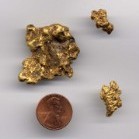
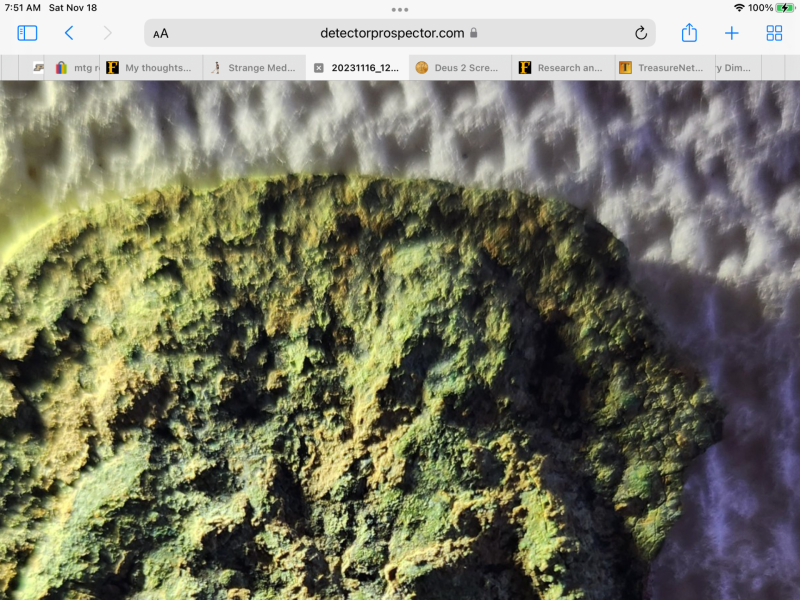
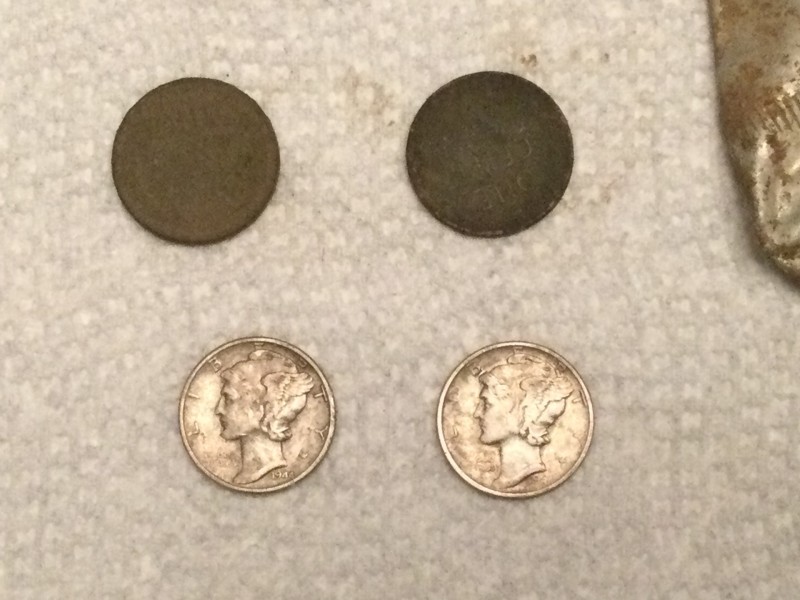
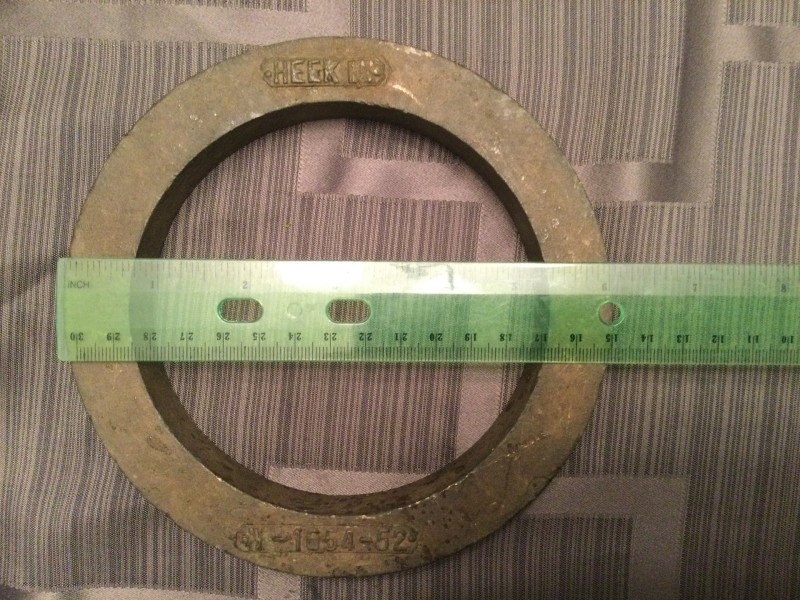
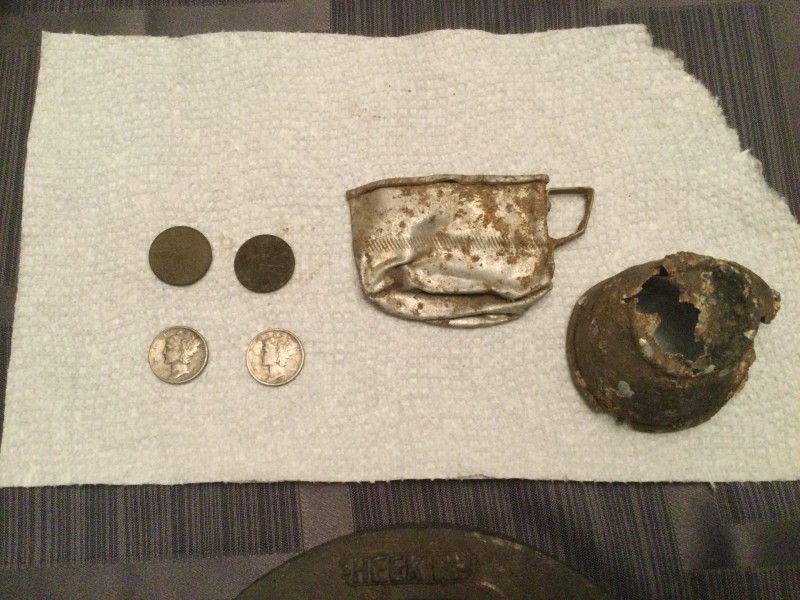
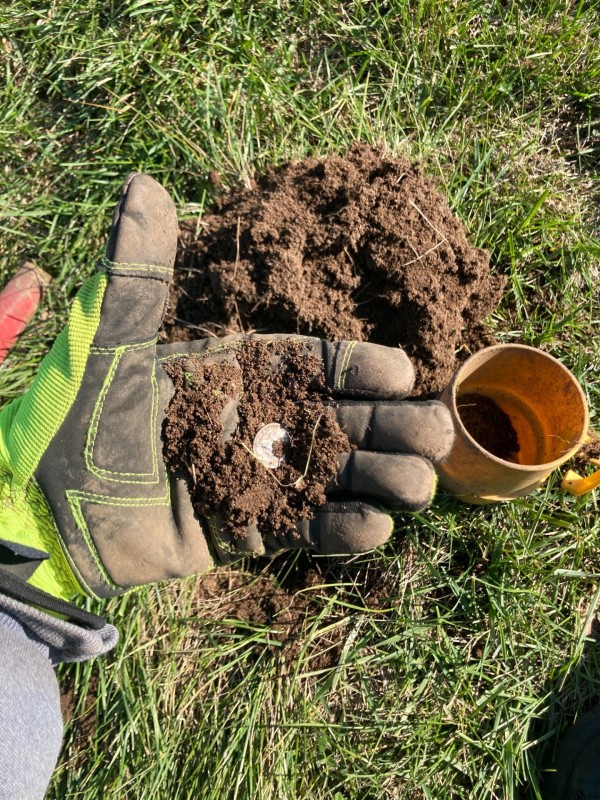
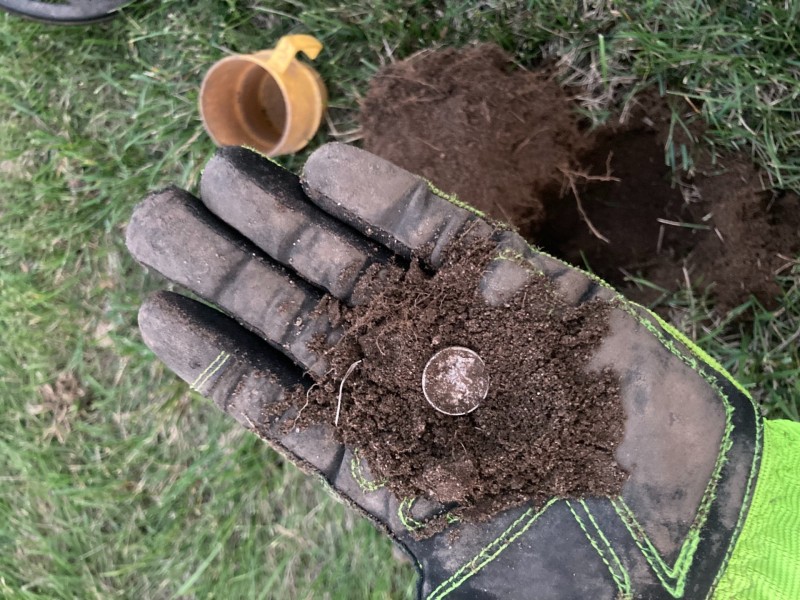
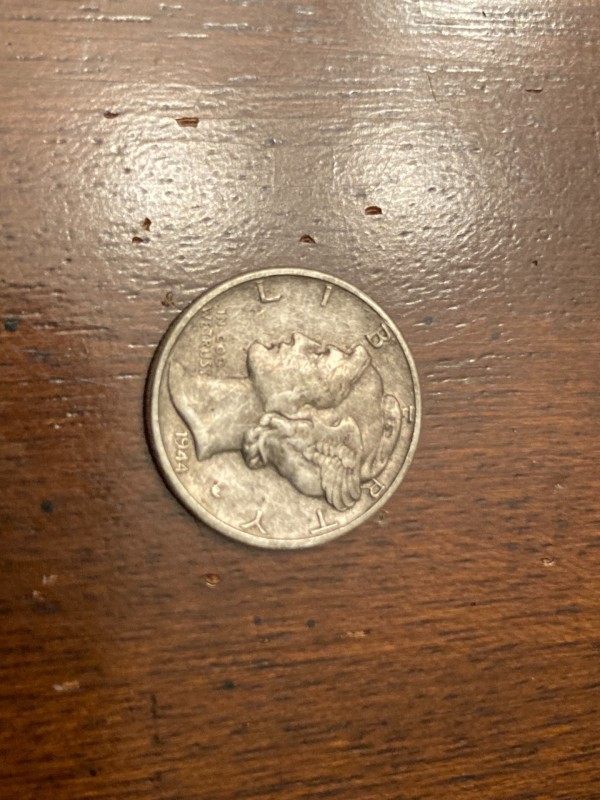
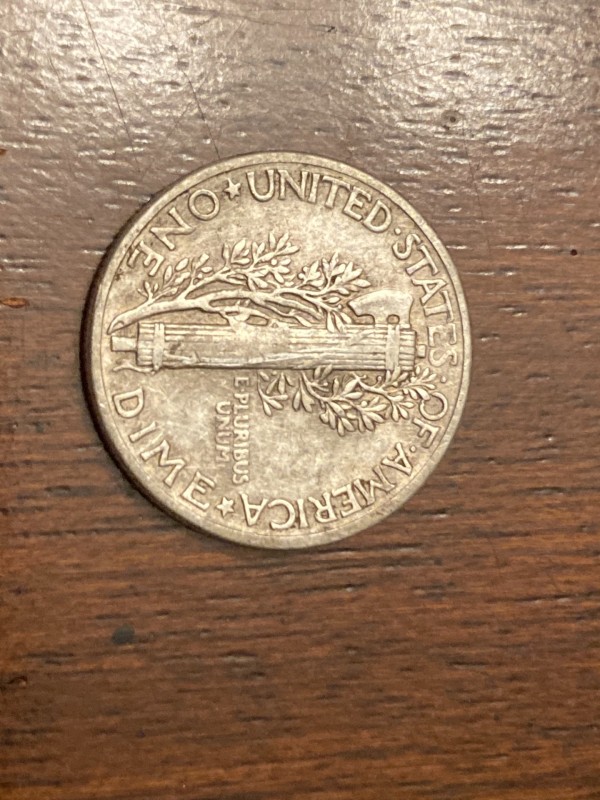
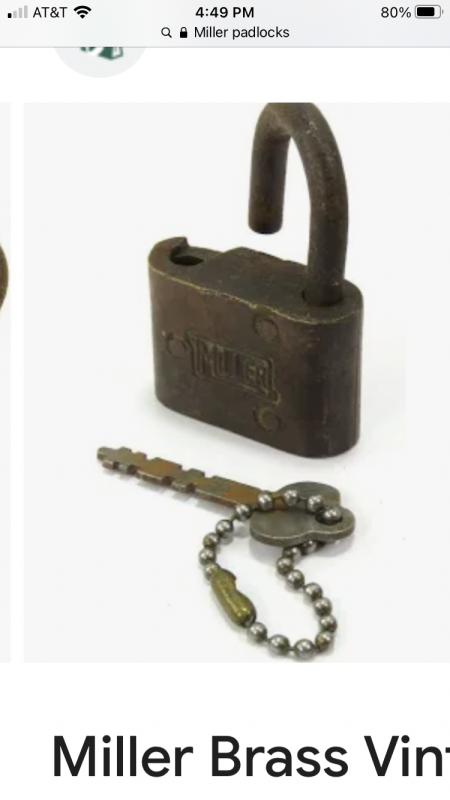
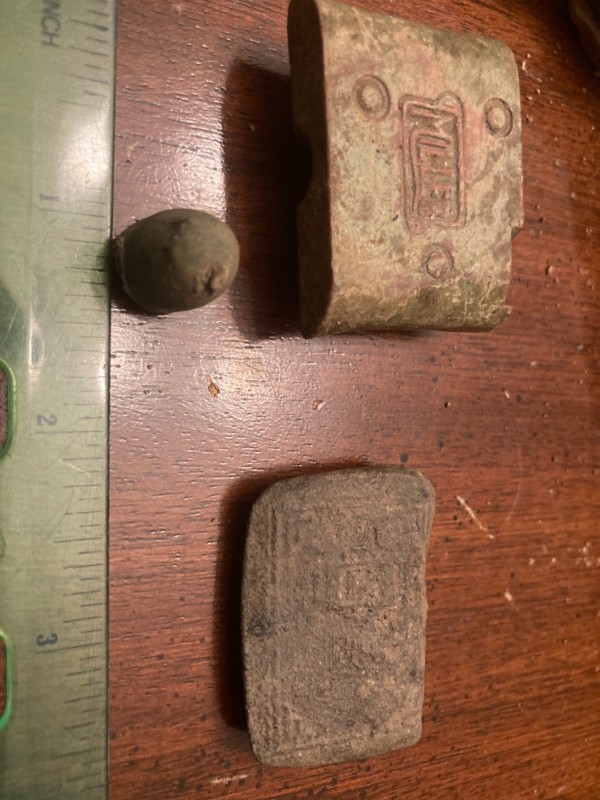
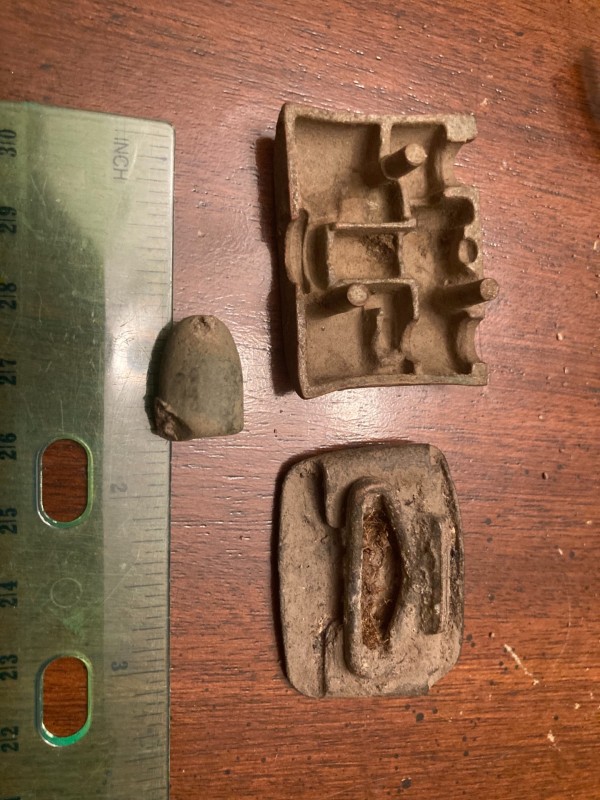
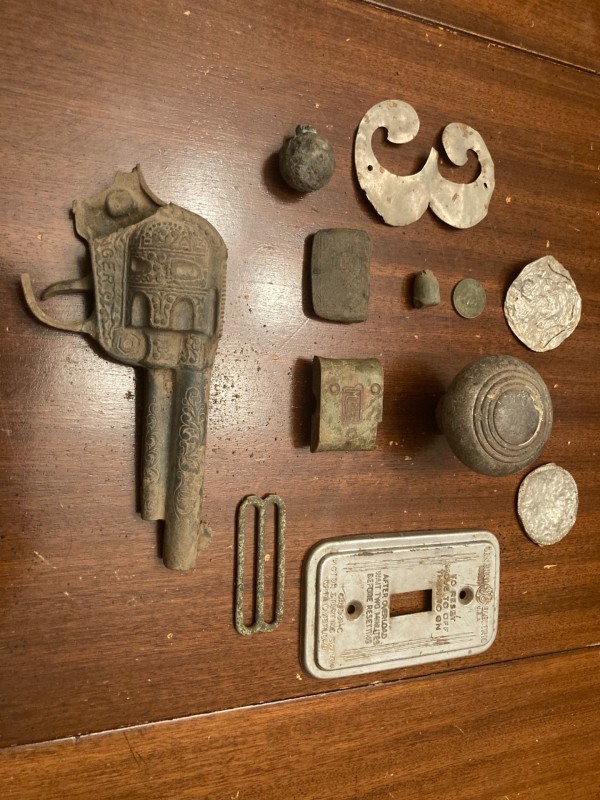
My Oldest Coin To Date!
in Metal Detecting For Coins & Relics
Posted
I know it may not be much by some standards, but 1882 beats my oldest coin by about two years. So I am happy to have it! Now to supplant it with something even older…
Found it at an old school house about 5 inches down along the edge of a bowl shaped depression from an old tree. It was a little jumpy on modified fast (Deus 2), but kept giving me a fairly consistent zinc penny range signal.
Also, the neighbor lady said she spoke with prior detectorists. So the site has been cherry picked.